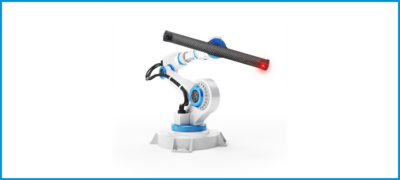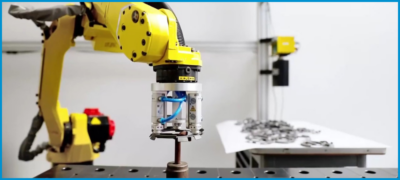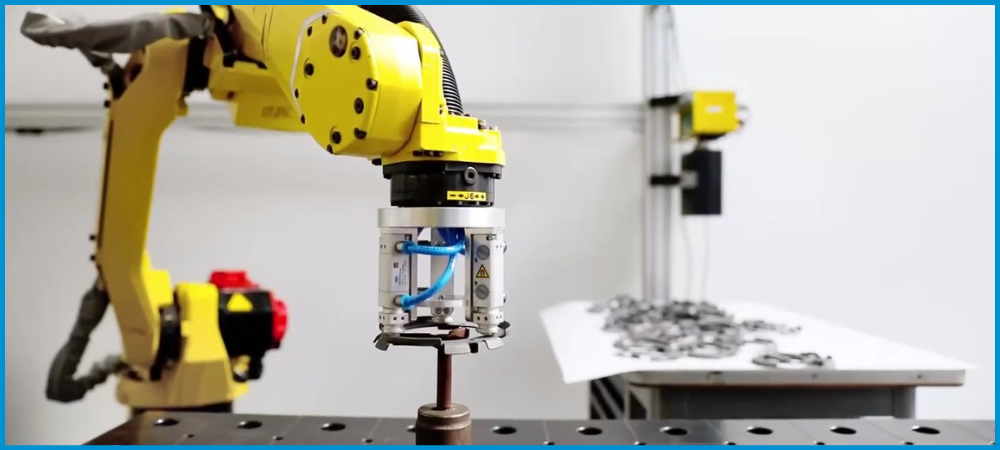
Unlocking efficiency and innovation: Industrial robotics
In today’s fast-paced industrial landscape, the integration of cutting-edge technologies is paramount to stay competitive. Among these technologies, industrial robotics stands out as it reshapes traditional manufacturing processes and unlocks unprecedented levels of efficiency and innovation.
Let’s delve into industrial robotics, explore its evolution, robot applications, advantages, challenges, and considerations, and get insights on how to choose the right industrial robotics solution for your specific application needs.
The evolution of industrial robotics
The first industrial robots emerged in the early 1960s, with the introduction of the Unimate (standing for Universal Automation) – the first digitally operated and programmable robotic arm for industrial applications designed by George Devol and Joseph Engelberger. General Motors (GM) was one of the early adopters of Unimate, utilizing it for tasks such as die casting and spot welding on automobile assembly lines.
Today, industrial robots are highly sophisticated, capable of performing intricate tasks with precision and efficiency, driving automation and streamlining production processes.. The evolution of industrial robotics has fundamentally transformed not only the manufacturing industry but also other sectors, such as logistics, agriculture, wood industry, or the pharmaceutical industry.
Key components of industrial robots
Industrial robots consist of several key components that enable their functionality. These include robotic arms, end effectors (such as grippers or welding tools), sensors (such as vision systems or proximity sensors), and control systems.
The robotic arm serves as the backbone of the robot, providing mobility and flexibility to perform various tasks. End effectors are specialized tools attached to the end of a robotic arm, allowing robots to interact with their environments and tasks. The most common types of end effectors are grippers (mechanical grippers, pneumatic grippers, vacuum grippers, magnetic grippers etc.) and process tools (welding tools, cutting tools etc.).
Sensors play a crucial role in providing robots information about the robot’s environment. A common type of sensors are 3D vision systems, which enable robots to perceive their surroundings, respond to changes, and facilitate tasks such as navigation, manipulation, and inspection.
Photoneo 3D vision systems offer exceptional resolution and submillimeter accuracy. The company’s line of PhoXi 3D Scanners provides unprecedented quality of 3D scans for static objects while MotionCam-3D and its color version MotionCam-3D Color offer superior quality of 3D data even in motion.

MotionCam-3D now also offers a new scanning method that significantly improves the signal readouts on transparent and shiny objects, adding much more detail and completeness of scans to data that was previously hard to scan.
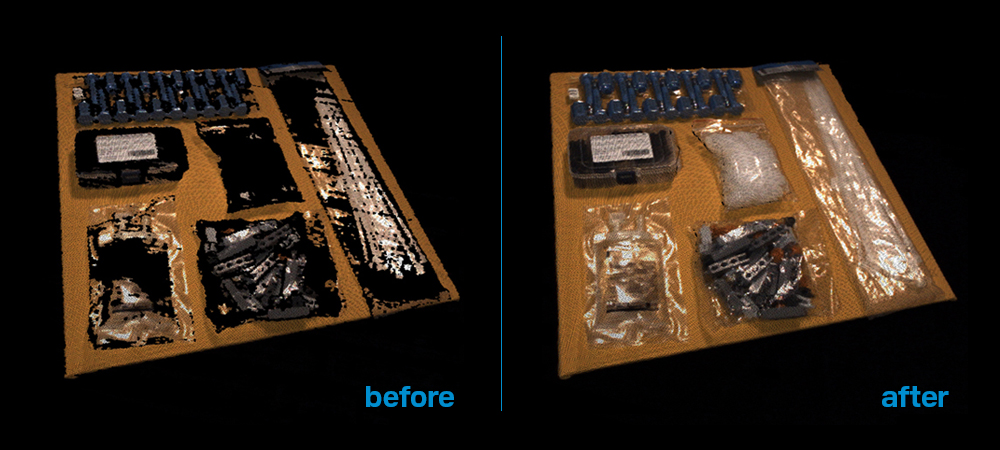
Photoneo also offers a 3D vision solution for simple vision and logistics tasks that require the scanning of medium-sized and large objects with simple shapes – the Alpha 3D Scanner.
Another key component of industrial robots are control systems, which govern the operation of the robot and coordinate its movements and actions. Robotic control systems encompass a range of functionalities, including motion control, path planning, or task execution.
Popular industrial robotics applications
Industrial robots find widespread applications across various industries, streamlining manufacturing processes and driving efficiency. Some popular industrial robotics applications are listed below.
Material handling and packaging
Robots are widely used for picking, placing, sorting, and packaging items in warehouses, distribution centers, and manufacturing facilities. They streamline processes and optimize logistics operations. Photoneo offers a number of pick & place solutions:
Bin Picking Studio – robotic intelligence SW for reliable bin picking of randomly or even entangled parts with path planning and collision avoidance.
Locator Studio – a 3D picking tool for fast localization and picking of oriented and semi-oriented items in collision-free environments.
AnyPick – an AI-powered tool for picking mixed types of items of various shapes, sizes, colors, materials, and textures, including tiny or large objects, parcels, heavy cartons, lighter tubes, ropes, belts, or organic items such as fruit or fish.
Automated assembly
Robotic arms excel in assembling components in industries like automotive, electronics, and consumer goods. They ensure precision and consistency in the assembly process, leading to higher quality products.
Robotic welding
Robotic welding systems are employed in automotive, aerospace, and metal fabrication industries to perform complex welding tasks with speed and accuracy. They enhance weld quality and improve workplace safety by reducing exposure to hazardous environments.
Painting and finishing
Robots equipped with painting and coating systems are utilized in automotive, aerospace, and construction sectors to apply paint, sealants, and finishes with uniformity and precision.
Machine tending
Robots are deployed to load and unload parts in CNC machines, injection molding machines, and other automated equipment. They ensure continuous operation, minimize downtime, and alleviate manual labor.
Quality control and inspection
Vision-guided robots are employed for quality inspection tasks such as surface inspection, defect detection, and dimensional measurement in industries like electronics, pharmaceuticals, and food processing. They enhance product quality and consistency while reducing errors.
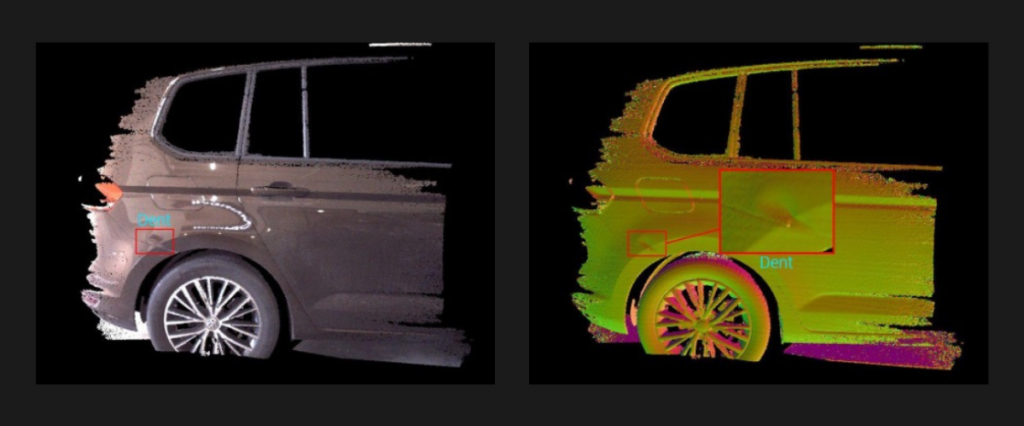
Material removal
Robots equipped with tools like milling, grinding, and cutting heads are used for material removal processes in industries such as the automotive, metalworking, woodworking, and composites manufacturing. They automate labor-intensive tasks and ensure precise material removal.
Palletizing and depalletizing
Robots are utilized for stacking and destacking pallets of goods in warehouses, distribution centers, and manufacturing plants. They optimize warehouse layouts, increase throughput, and reduce manual handling risks. Photoneo solutions for these types of applications include:
Depalletization solution – an AI-powered tool for robotic unloading of individual boxes from pallets
Delayering solution – an AI-powered tool for robotic unloading of entire layers of goods from pallets
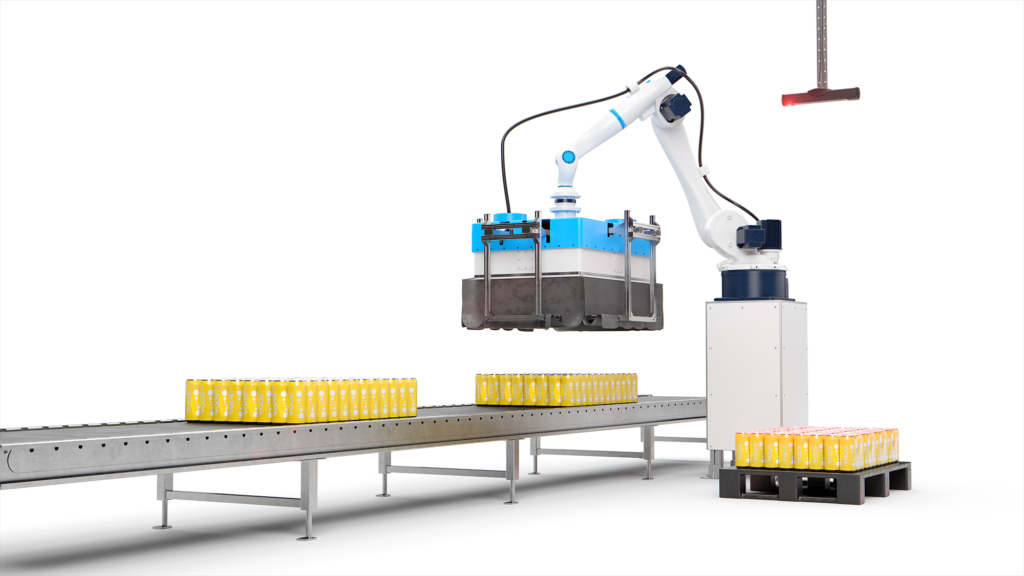
Collaborative robotics
Collaborative robots (Cobots) work alongside human operators in various applications, including assembly, material handling, and inspection. They enhance flexibility, productivity, and safety by enabling close human-robot interaction.
Advantages of using industrial robotics
The adoption of industrial robotics offers numerous benefits to businesses, including:
- Increased efficiency and productivity
- Enhanced accuracy and precision in tasks
- Improved employee safety by automating hazardous or repetitive tasks
- 24/7 operation, leading to higher production throughput
- Consistent product quality and reduced error rates
Challenges and considerations
Despite the advantages, deploying industrial robotics comes with challenges and considerations, including:
- Initial costs for deployment and return on investment (ROI)
- Integration with existing systems and workflows
- Maintenance and repair costs over the robot’s lifecycle
- Ethical considerations surrounding job displacement and the replacement of human labor with automation
How to choose the right industrial robot
Selecting the right industrial robot for your specific needs requires careful evaluation of several factors, including:
- Assessing the task requirements and feasibility of automation
- Evaluating the robot’s capabilities to perform the desired tasks effectively
- Considering budget constraints and evaluating ROI potential
Conclusion
Industrial robotics represents a transformative force in modern manufacturing, unlocking efficiency and innovation across various industries. As businesses embrace automation to stay competitive in a rapidly evolving market, the adoption of industrial robots continues to grow while the potential for unlocking new levels of efficiency and innovation remains limitless.
By leveraging the advantages of industrial robotics, businesses can optimize their production processes and drive sustainable growth.
Let’s explore the world of robotics and smart factory solutions together to discover the possibilities for your projects. Contact us to learn more about how Photoneo solutions can benefit your applications.


